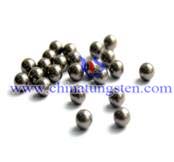Tungsten alloy military and army.
The army of Gambia is made up of infantry battalions in the Gambia National Guard (GNG), Gambia National Army (GNA) and the navy which are under the Department of State for Defence, Banjul. There is no conscription in the Gambia and the age for voluntary enrolment for men and women is 18 years of age.
Initially recruits are enrolled for a specified minimum period, in which they undergo training of between 4 to 6 months, thereafter they may choose to sign-up for another specified time period.
The Army:
The army has around 1,900 soldiers which consists of infantry battalions, the national guard, and the navy, who are all under the authority of the Department of State for Defence (a ministerial portfolio held by President Jammeh). Prior to the 1994 coup, the Gambian army received technical assistance and training from the US, UK, China, Turkey and Nigeria. The army has received renewed assistance from Turkey and new assistance from Libya and others.
Members of the
Gambian military have participated in ECOMOG, the West African force deployed during the Liberian civil war beginning in 1990. Responsibilities for internal security and law enforcement rest with the Gambian police / gendarme force under the Inspector General of Police and the Ministry of Interior.
The main aims of the armed forces as written in the constitution are to defend and preserve the sovereignty and territorial integrity of The Gambia, to aid civil authorities during emergencies and national disasters; to engage in productive activities such as agriculture, engineering, health and education for the development of The Gambia.
The development of The Gambia Armed Forces and the expansion of its primary and principal functions came about as a result of the 1994 change of government. The 1997 Constitution gives The Gambia Armed Forces additional mandates in the light of the changing phenomena in the traditional roles of the Armed Forces. These additional mandates have allowed the expansion of the role of The Gambia Armed Forces such as Rescue Missions, Emergency and Disaster Operations, and International Peacekeeping and Peace Enforcement Missions as well as agricultural participation. The Gambia Armed Forces as part of its new and additional roles has been actively participating in the fight against HIV.

The Gambia Armed Forces has established a close collaboration with the National Aids Secretariat (NAS), the Medical Research Council and other health care delivery agencies in its endeavour to fight against HIV/Aids and other infectious diseases. This has led to the creation of a special office, which is equipped and staffed for that purpose. The primary function of this office is to effectively sensitize the officers and soldiers, their dependants, the civilian staff and all other members of The Gambia Armed Forces about the menace of HIV/Aids.
In its move to maintain the welfare of its serving members, The Gambia Armed Forces has endeavoured to renovate all existing accommodations in all its barracks. New accommodation structures have already been built at Yundum Barracks and improvement on these structures are underway. New accommodation structures have also been built in Basse. Renovation works in Farafenni and Kudang Barracks have been completed. The renovation work at Fajara Barracks is now completed. All these have been done to improve on the living conditions of the officers and soldiers as well as their dependants. Also, a new Armed Forces Headquarters have been created for effective command and control and for the improvement of the working conditions of the staff officers.


















































